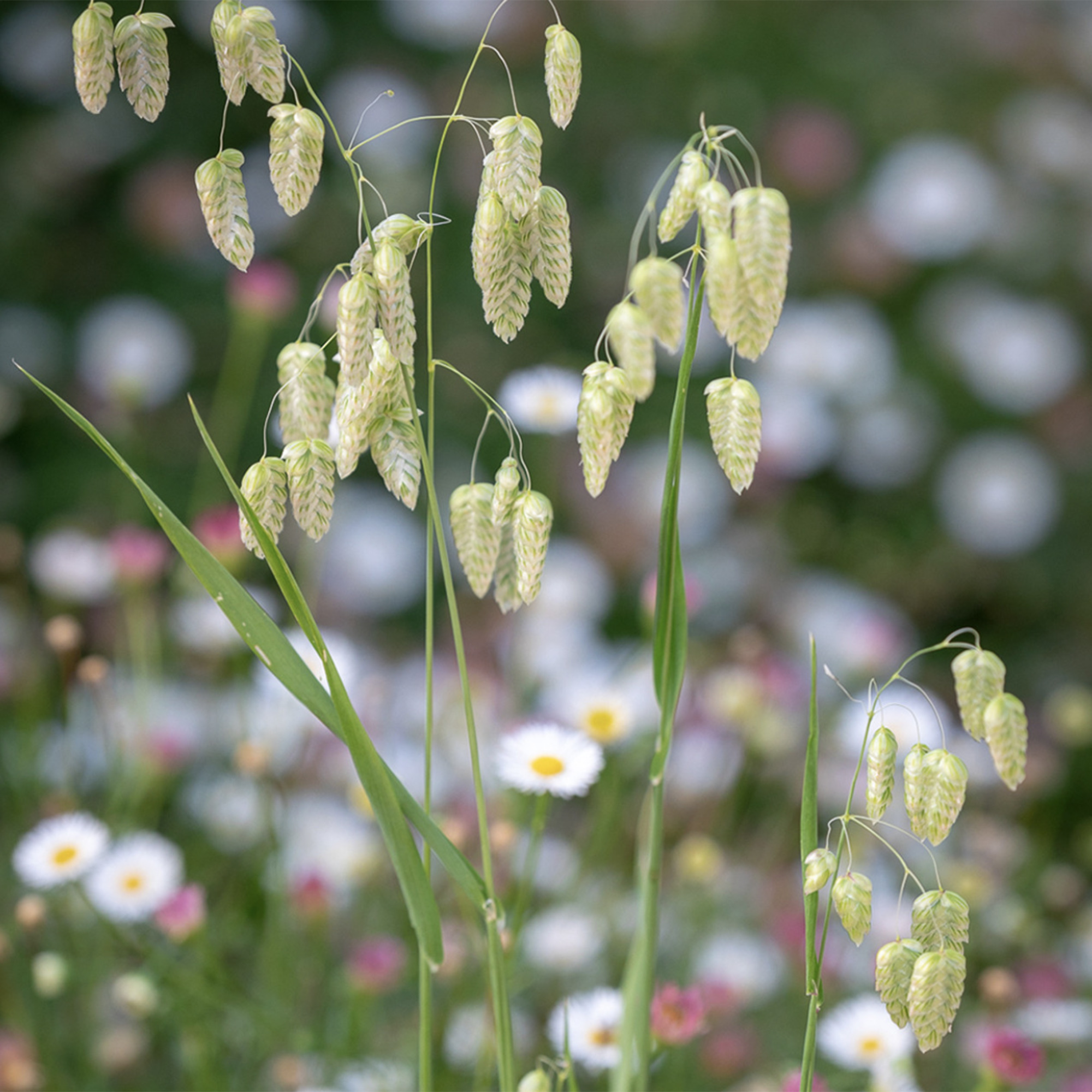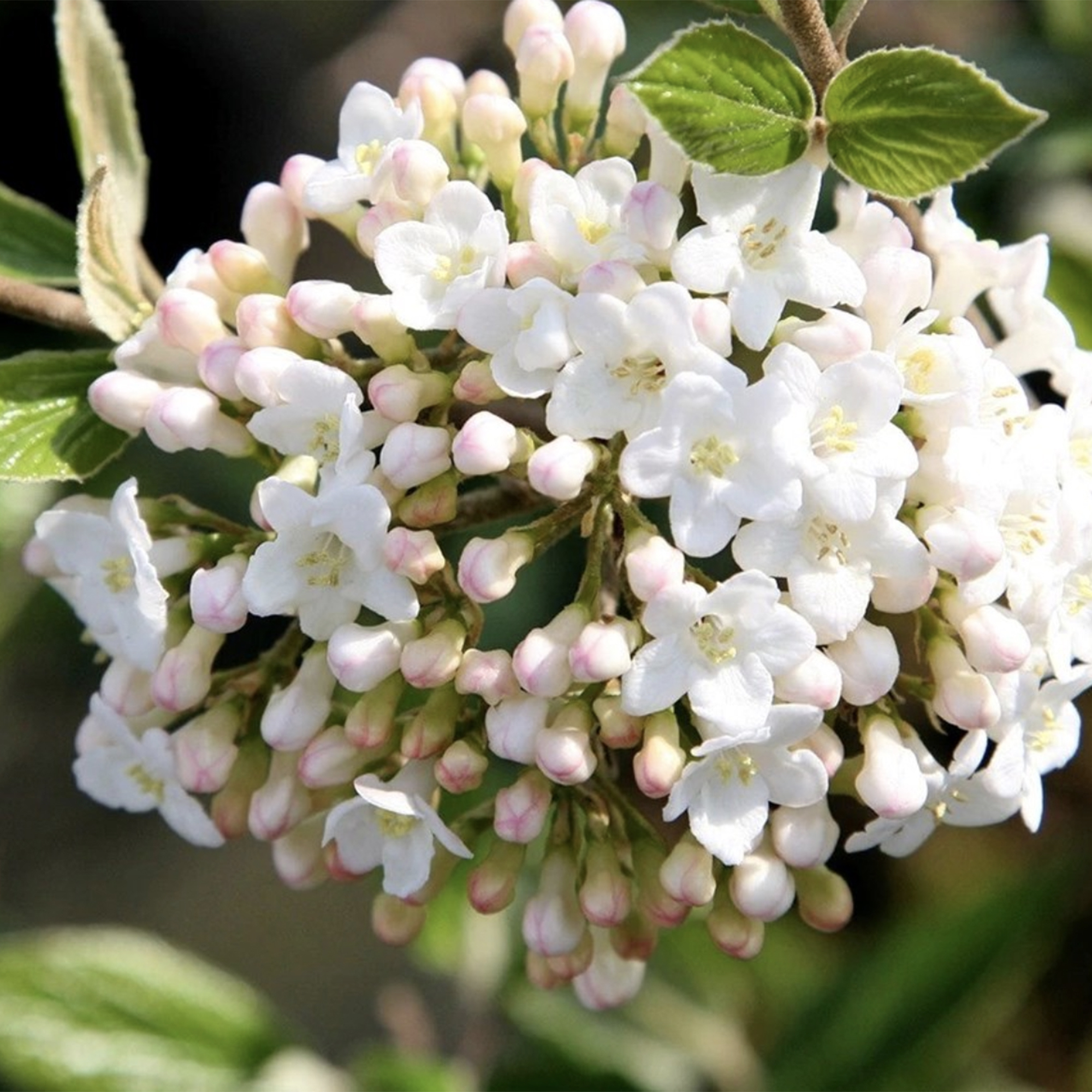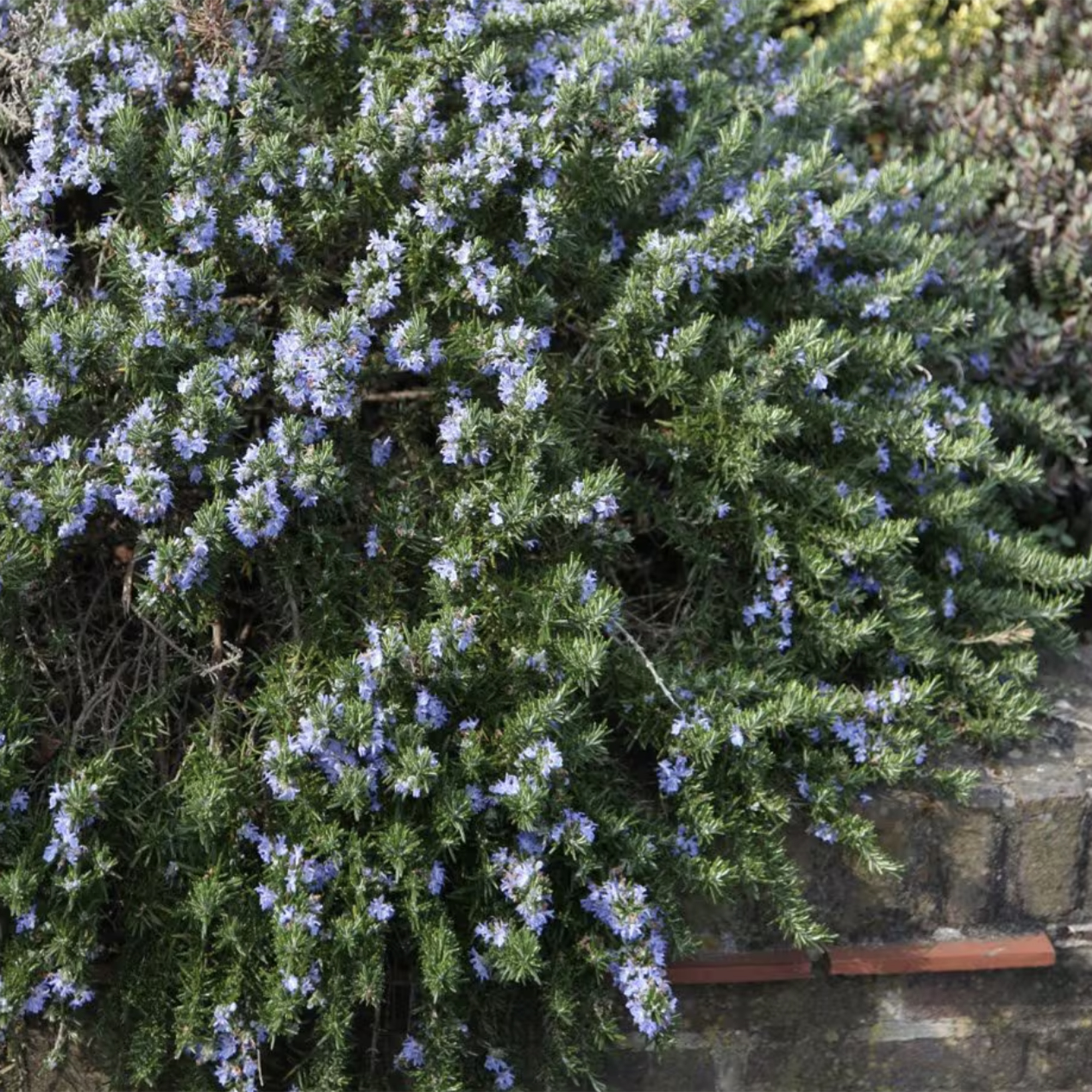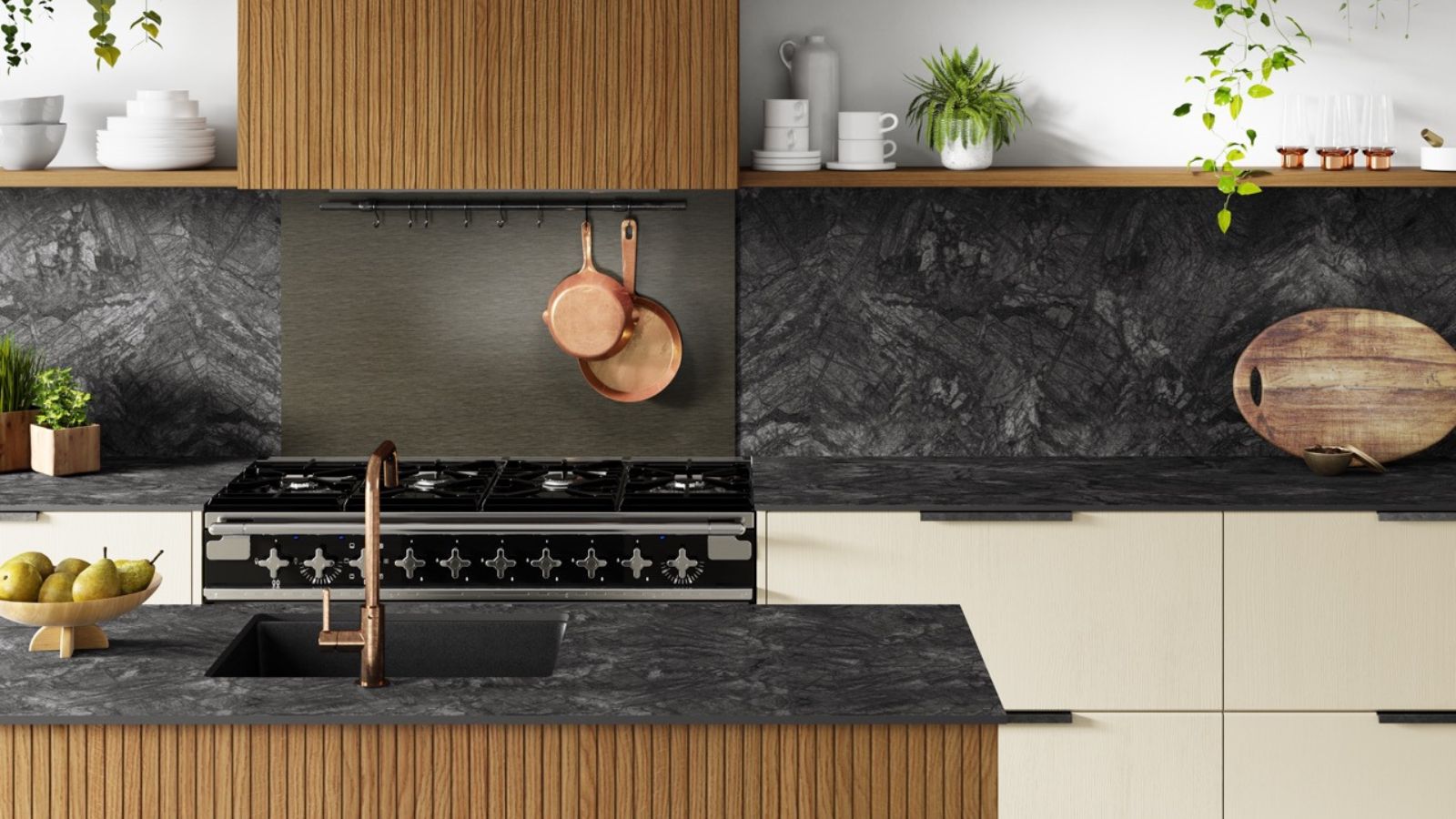These sensory garden ideas can help to create a mindful escape from the stresses of everyday life
Including sensory elements in your garden will work wonders for lifting your spirits
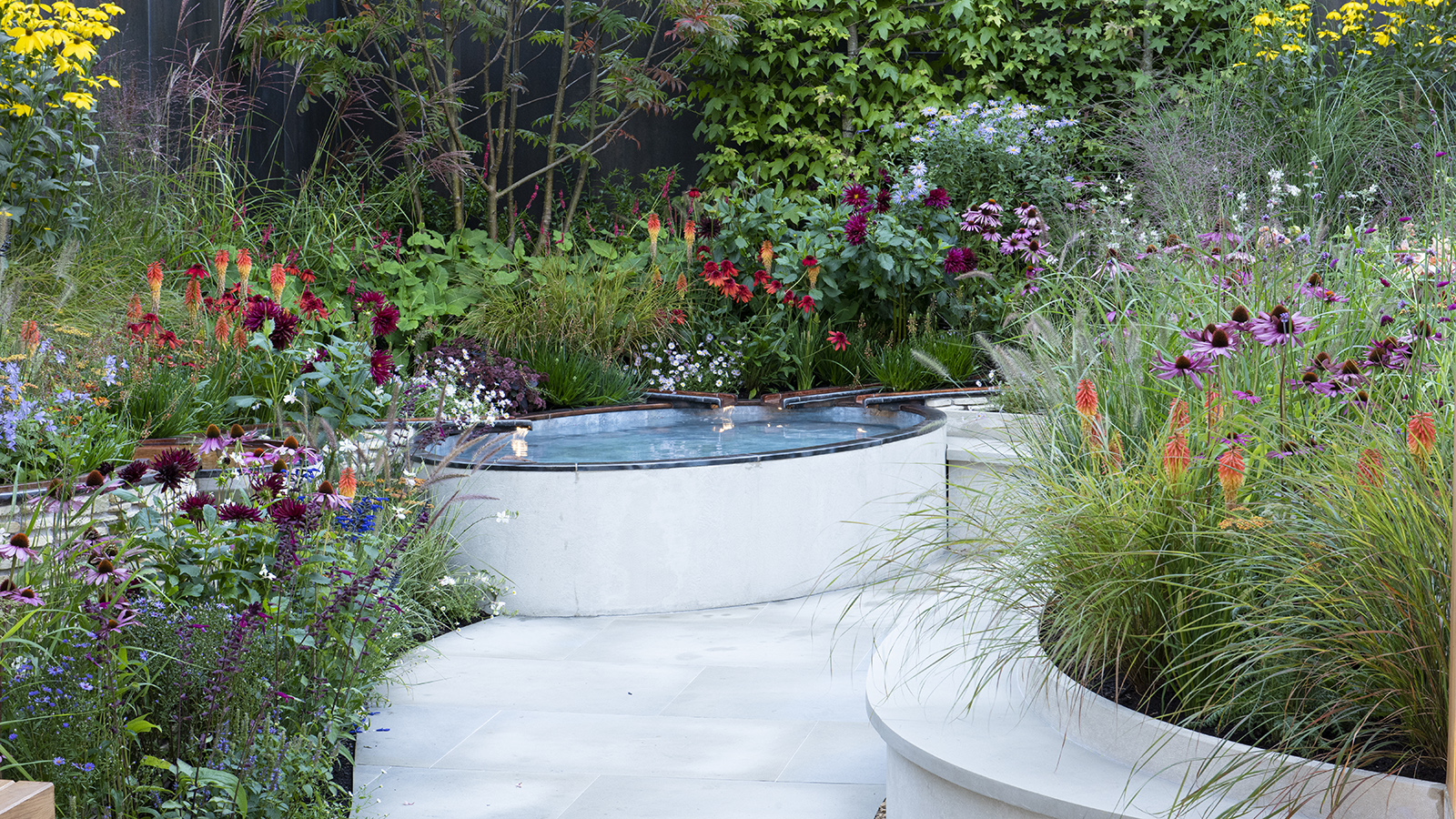
The aim of incorporating sensory garden ideas in your space is to provide an outdoor area which interacts with all five senses: sight, sound, scent, touch and taste. Engaging with what our senses are experiencing is one of the key principles of mindfulness.
The therapeutic elements of a sensory garden can be built into your garden design regardless of the size of your space. It can help to provide a calming haven, which allows us to focus our senses and therefore our minds, promoting a sense of well-being and the feeling of being at one with nature and our surroundings.
"In today’s hectic world, our gardens are more than just aesthetic spaces; they are sanctuaries that ground us, evoking a sense of calmness and tranquillity away from the hustle and bustle of busy modern life," says plantswoman Sarah Raven.
Sensory gardens are excellent for people with disabilities, such as autism, as they act as a place of refuge," adds Ali Wooldridge, co-founder of Gardenesque.
Create a mindful outdoor space with these sensory garden ideas
"You can create a sensory garden with any size space, whether you have a small garden or a sprawling space. The key is to incorporate different textures, abundant colours, and plants that will attract garden birds and other wildlife," says Sarah Raven.
"Creating a varied planting scheme in your garden landscaping that will engage all the senses is a great place to start, paying close attention to sight, look, touch, smell and taste," says Sarah.
1. Plant colourful flowers for sight
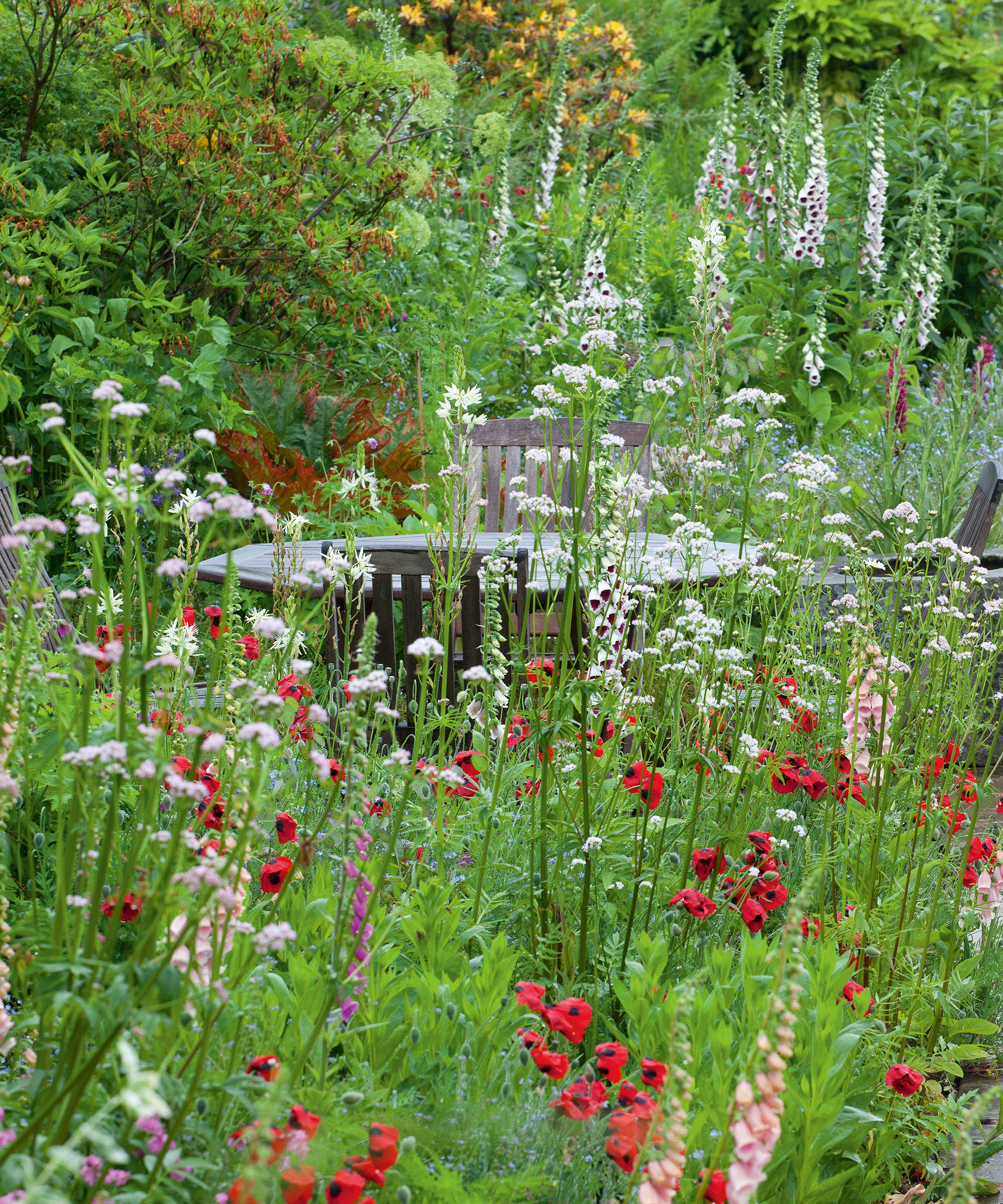
BBC Gardeners' World presenter and gardening expert at Stannah, Mark Lane begins by explaining the importance of colour in a sensory garden.
Bring your dream home to life with expert advice, how to guides and design inspiration. Sign up for our newsletter and get two free tickets to a Homebuilding & Renovating Show near you.
"Introducing colour into the garden will help with elements like visual appeal, texture, shape and form. Select mounds and spires when putting plants together.
"Use hot colours, such as red, orange and bright yellow, to lift your mood, or opt for shades like blue, pink, soft yellow and white to calm and relax you. With loss of eyesight, brighter colours might need to be considered, or contrasting colours used to define spaces, garden edging or overhanging plants," adds Mark.

Stannah’s gardening expert, multitalented gardening expert and author, he’s widely known for presenting BBC Morning Live and BBC Gardeners' World. Mark has earned many awards, including the ‘first garden designer in a wheelchair'.
2. Grow fragrant blooms for scent
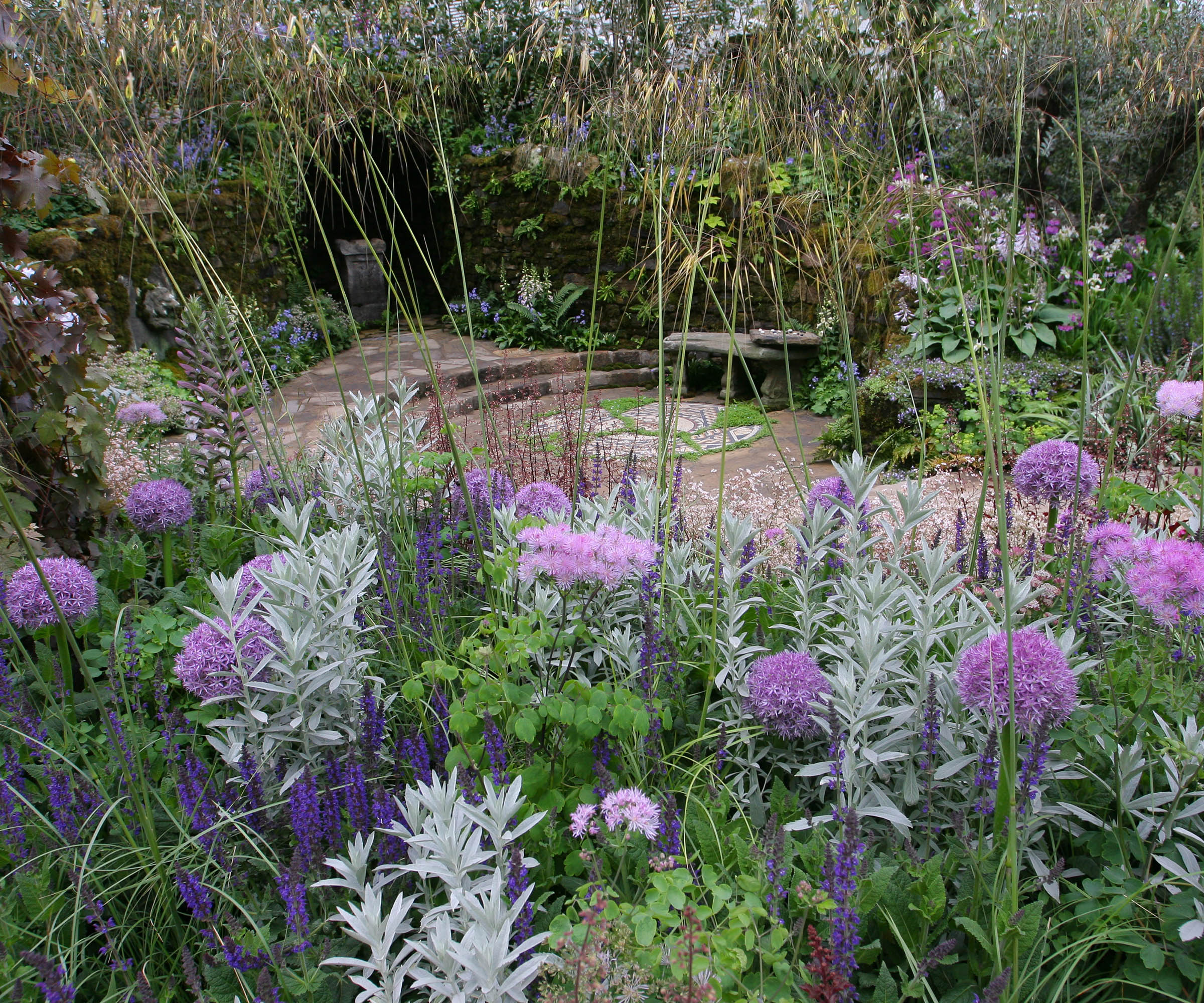
Fragrance is key in sensory garden ideas, particularly for individuals with sight problems. Mark Lane mentions that smell is one of the important senses that can also help with memory loss and dementia.
"Childhood memories or certain scents can help spark the neurons in the brain. The aroma of rosemary can lower the stress hormone cortisol in your blood, enhance memory quality, and increase mental alertness. Rosemary properties can even prevent and slow Alzheimer's," says Mark.
He advocates using scent as a marker throughout the garden; "for example, patio planting ideas like sweetly scented honeysuckle by the back door will tell you that you are near the house (this will need a sunny spot and shelter from winds to thrive), while strongly scented jasmine or rose at the back of the garden will inform your location in the garden."
It is possible to overdo scent in a garden, so Mark suggests that we try and select scented flowers with either similar or contrasting scents and avoid having them come out all simultaneously.
"Spring-flowering fragrant plants such as daphne will be replaced by summer-flowering scented plants like lathyrus, which in turn will be replenished by autumn- and winter-flowering aromatic plants like Viburnum," says Mark.
Best plants for sensory gardens
3. Play with wind or water for sound
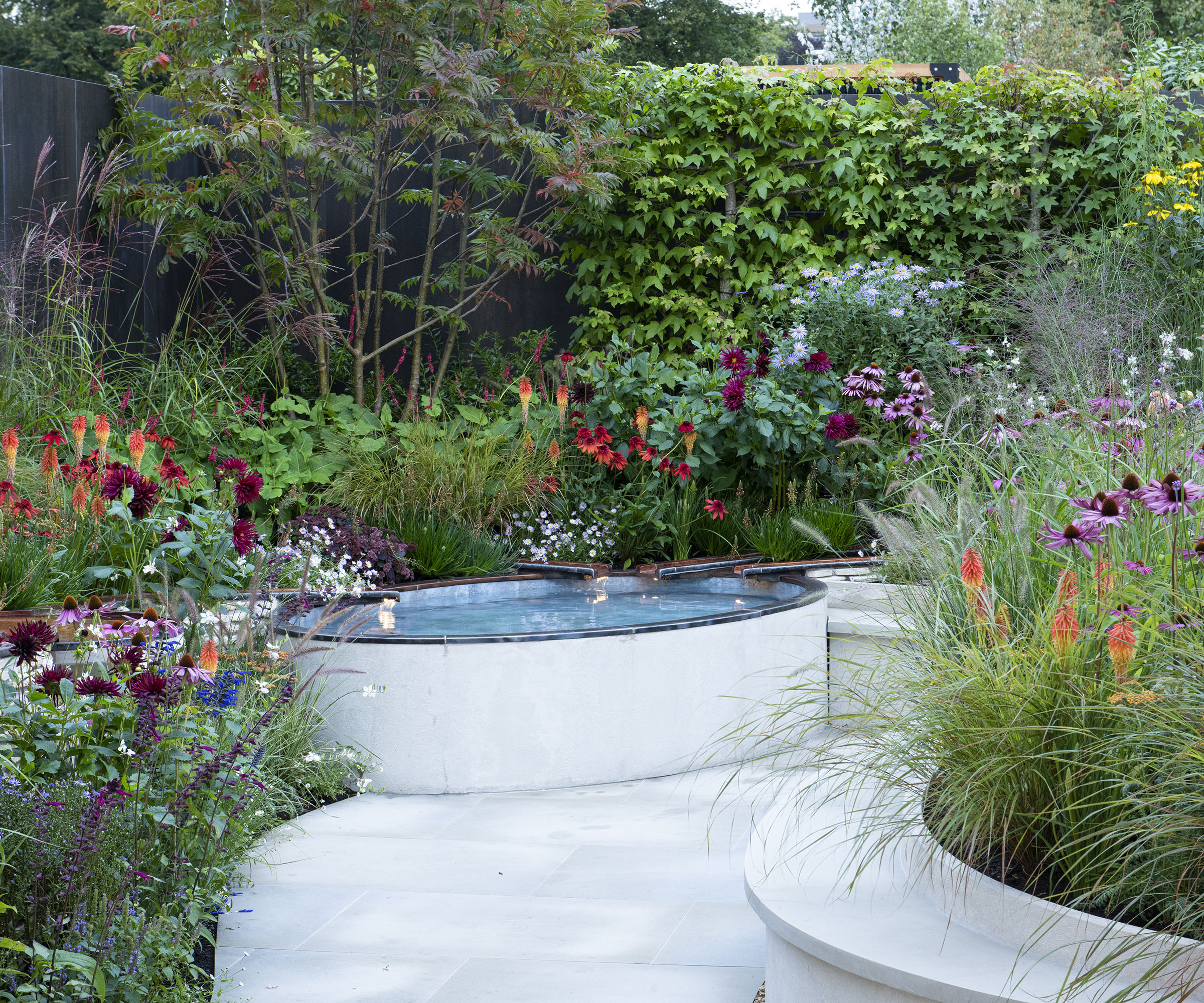
Sound is an often unforgotten component in a garden, but one which is crucial to a sensory garden.
There are several ways in which you can introduce subtle sounds to your garden. Mark Lane suggests ornamental grasses, bamboo and open-structured trees sound amazing, rustling in the wind, while water features will be auditory from all garden areas.
"Choose a gently trickling water feature for a zen, calming space or a gushing spout for an energised space. Wind chimes can also add sound to the garden. By creating a biodiverse and eco-friendly garden, you will also attract musical wildlife, from the buzzing of pollinators and birdsong," says Mark.
4. Plant herbs and vegetable patches to enhance taste
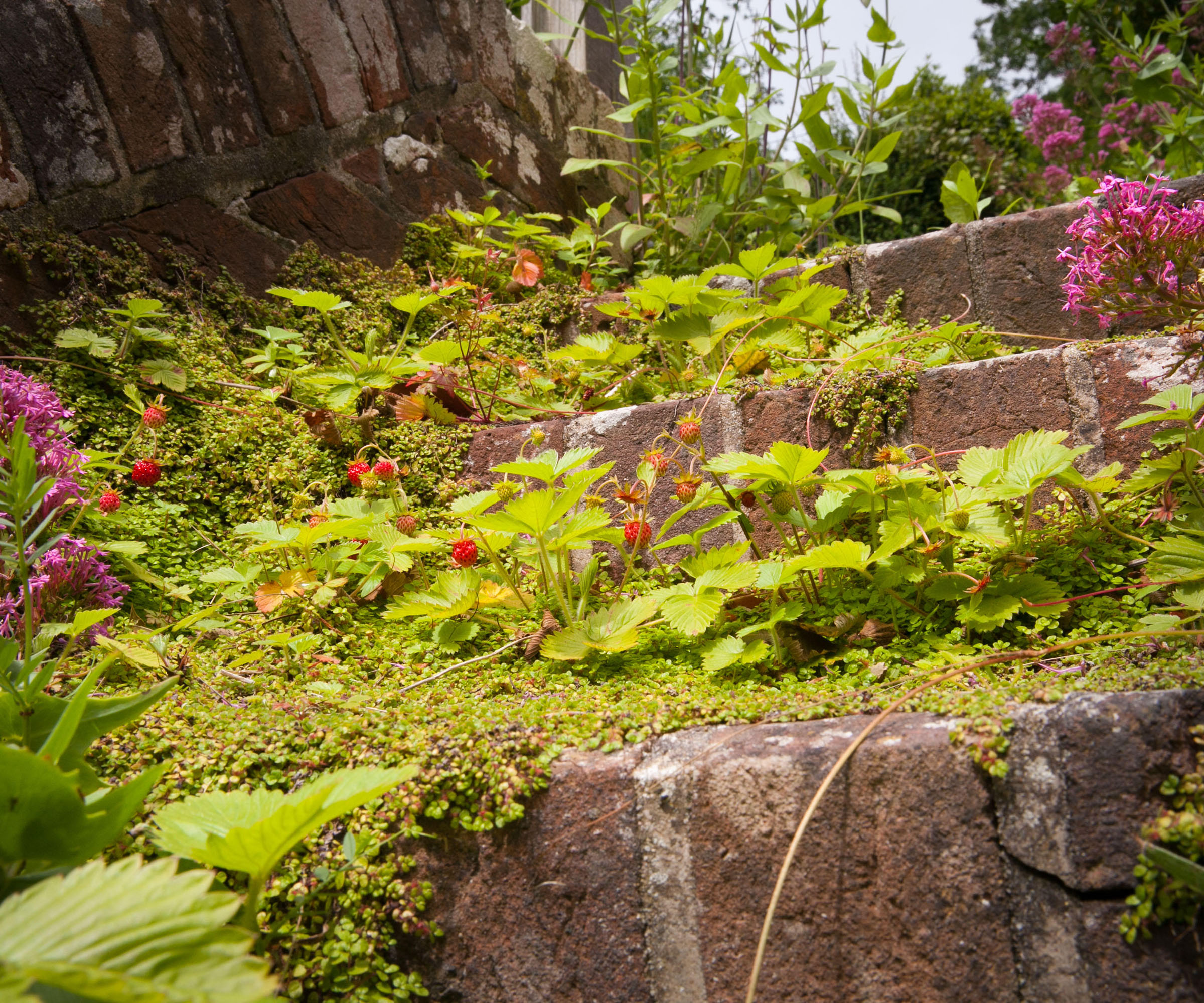
"Herbs, vegetables and fruit will entice the taste buds. Use herbs close to seating areas or by the back door for ease, like curry plant (Helichrysum italicum), lavender, oregano, rosemary or sage," says Mark Lane.
"Alpine strawberries can be used as groundcover in sensory gardens. Not only will they flower, but they will also produce sweet fruit and keep the weeds down. Adding a vegetable patch or creating espaliered fruit trees up walls and garden fences will make a feast for the eyes and the stomach," says Mark.
5. Or incorporate edibles into your planting
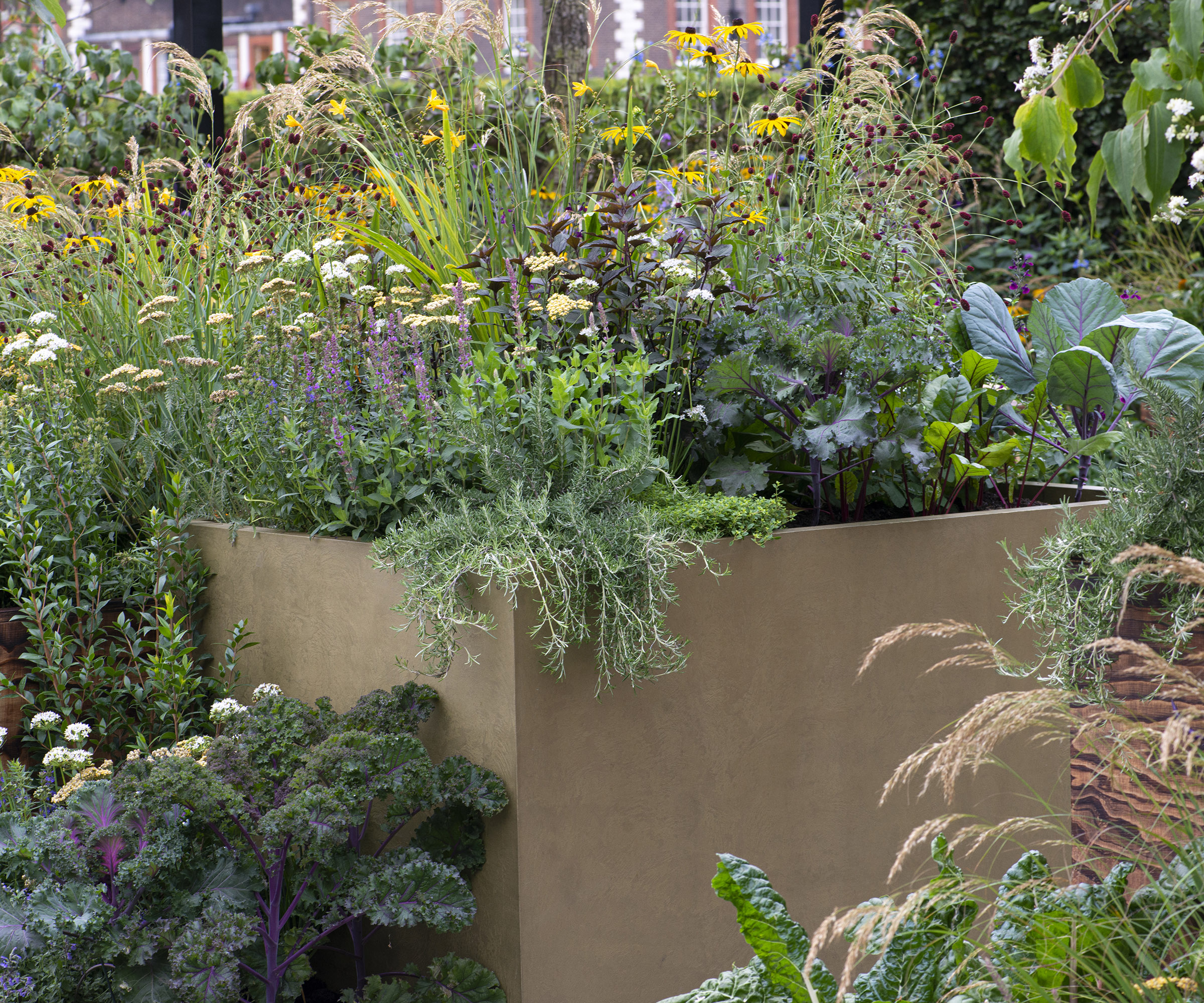
Separate vegetable garden areas are largely space dependent, but more recently, landscape designers, such as Alan Williams at the RHS Chelsea Flower Show 2021, have shown us that edibles can deliver on so much more than just taste.
"Interplanting edibles amongst ornamentals will help you establish an abundant sensory garden. I’d recommend a combination of mustard 'Red Frills', kale 'Curly Scarlet', radishes, and French sorrel," says Sarah Raven.
"The strong, zingy lemon taste of French sorrel is one of my all-time favourites and a must-have for adding to salads and dressings," says Sarah.
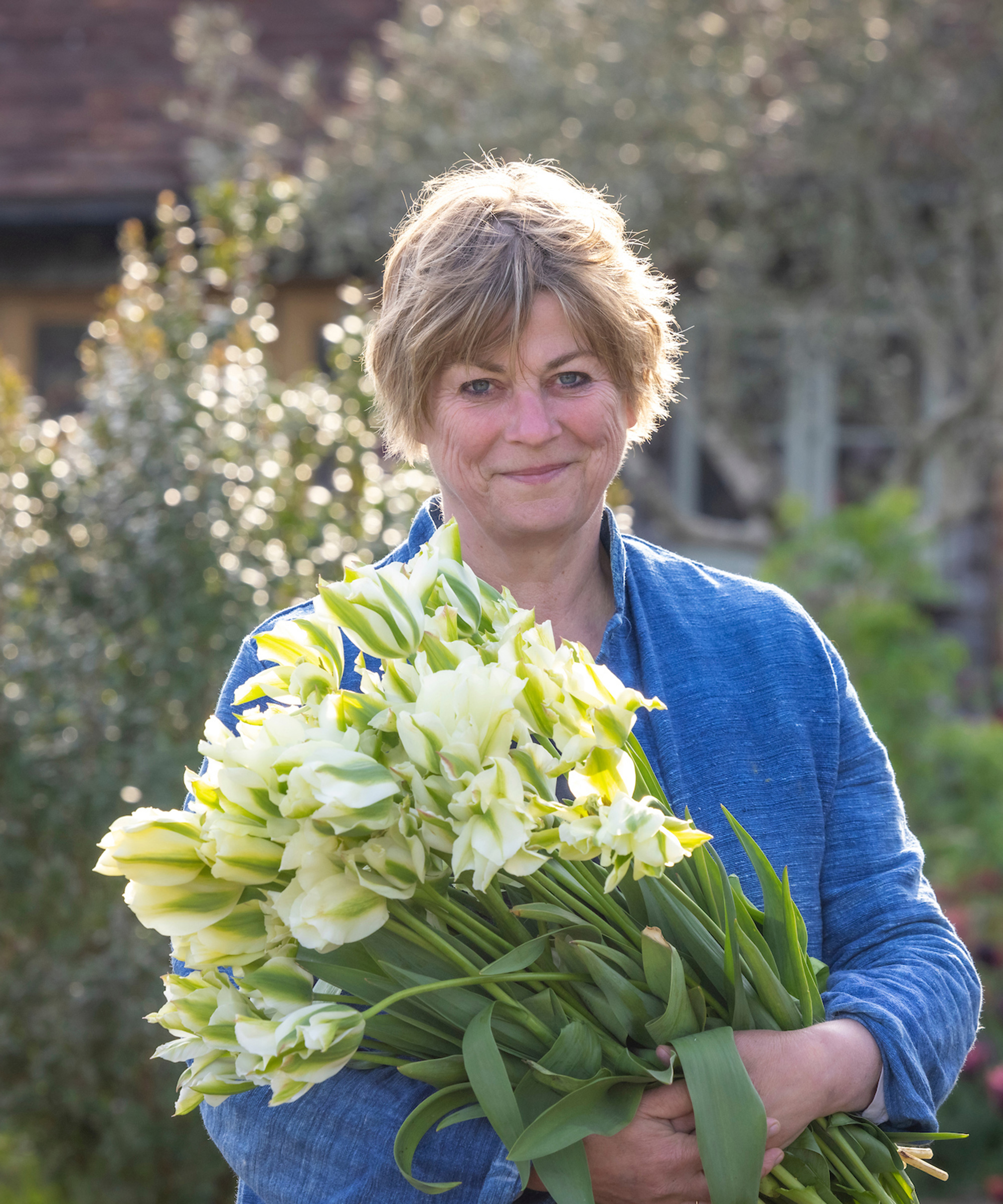
Sarah’s love of gardening extends to all areas, from growing cut flowers and delicious vegetables from seed, to designing stunning gardens packed full of variety, colour and scent. Always with a focus on helping the environment and biodiversity, Sarah’s gardens are havens for birds, bees and other pollinators.
6. Build textured surfaces for touch
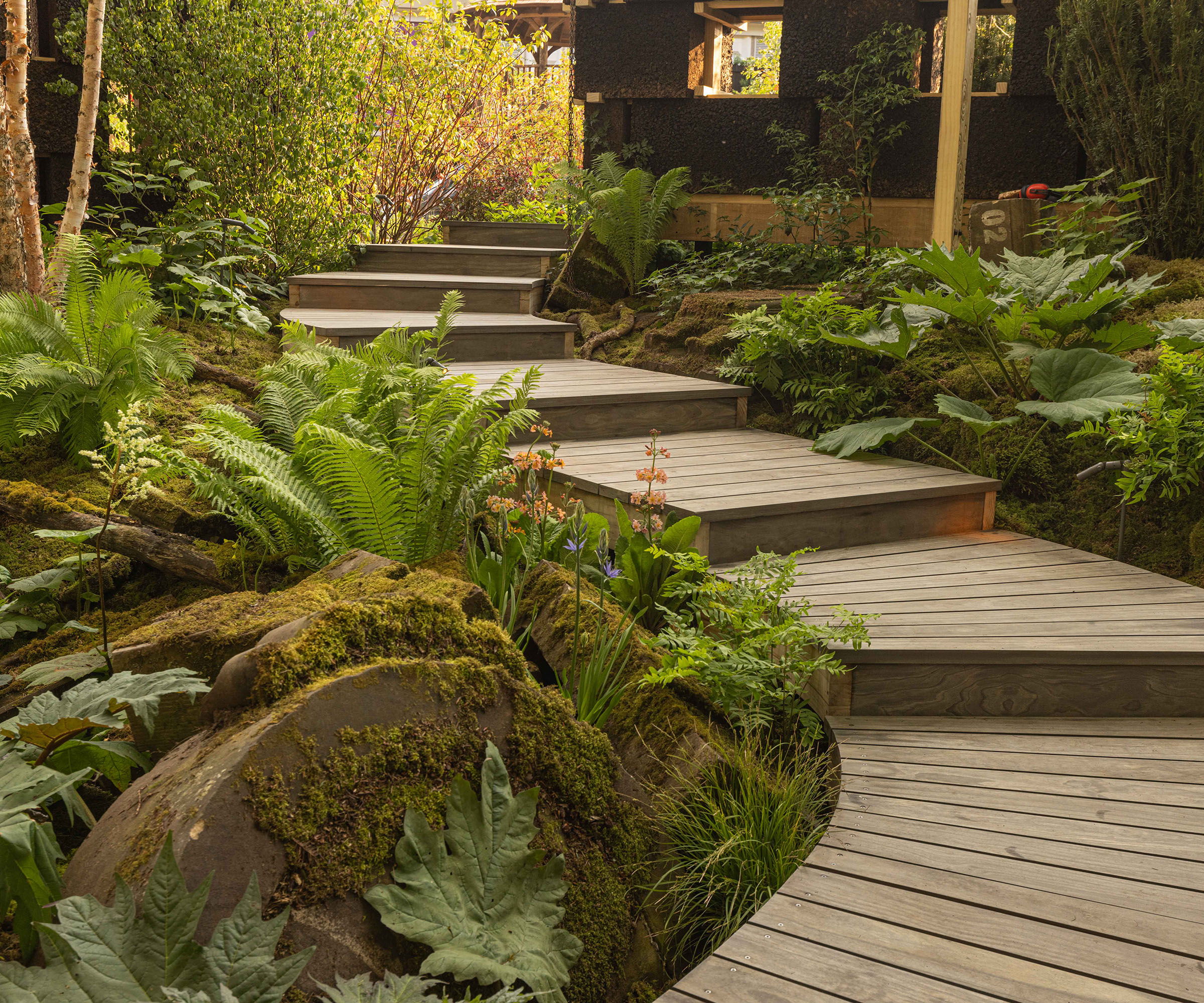
Texture in a garden refers both to planting and hard landscaping materials. "Think about the materials you want to use on pathways to create different textured garden path surfaces. Low maintenance gravel garden ideas will create crunch underfoot, exciting the auditory senses while visually contrasting with turf and planting," says Mark Lane.
"Natural stone will be smooth to walk and sit on, while wooden structures like pergolas will be warm and can be left smooth or rough. Metal in the sensory gardens will be cooler to the touch, especially in winter, so think about handrails and material choice right from the start," he adds.
For plant textures in the border go for textured foliage like ferns or grasses that you won't be able to resist running your fingers through.
"Consider the whopping, spiky, football-like heads of Dianthus barbatus 'Green Wicky' and the velvety Tithonia ‘Torch’ for texture. These will look wonderful in pots, raised garden beds or in borders," adds Sarah Raven.
7. Create accessible pathways for individuals with mobility issues
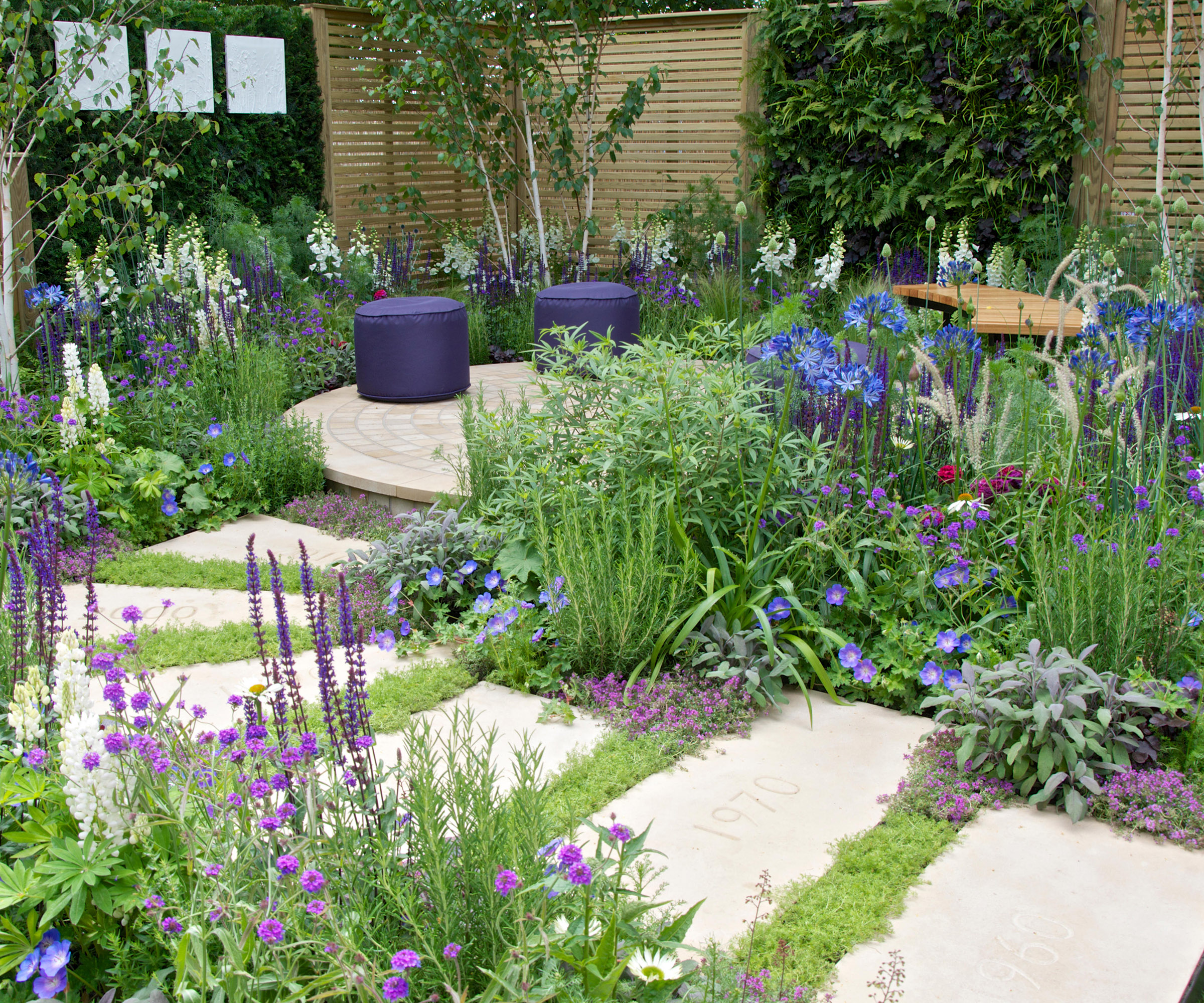
Think about installing firm, stable wide pathways in a sensory garden. "Ensure your sensory garden is inclusive by positioning its elements at an accessible height for wheelchair users," says Mark Lane.
"Add a raised edge to pathways in accessible garden designs, so feet, wheels and canes don't end up in flower beds. Illuminate pathways, introduce handrails to steps and different coloured edges to the treads, ramps and overhangs. Seats should be a mix of built-in and stand-alone. Ensure there are strong arms to push up from, or the benches are secure and stable and will not wobble when you get up.
"Gardens should be safe and secure places where you feel relaxed and protected. By thinking about these key senses and breaking down the garden into manageable areas, you can tackle each area individually, and you will create a space that you and the wildlife can enjoy for many years to come, keeping all the senses active," adds Mark.
8. Zone different areas for the senses
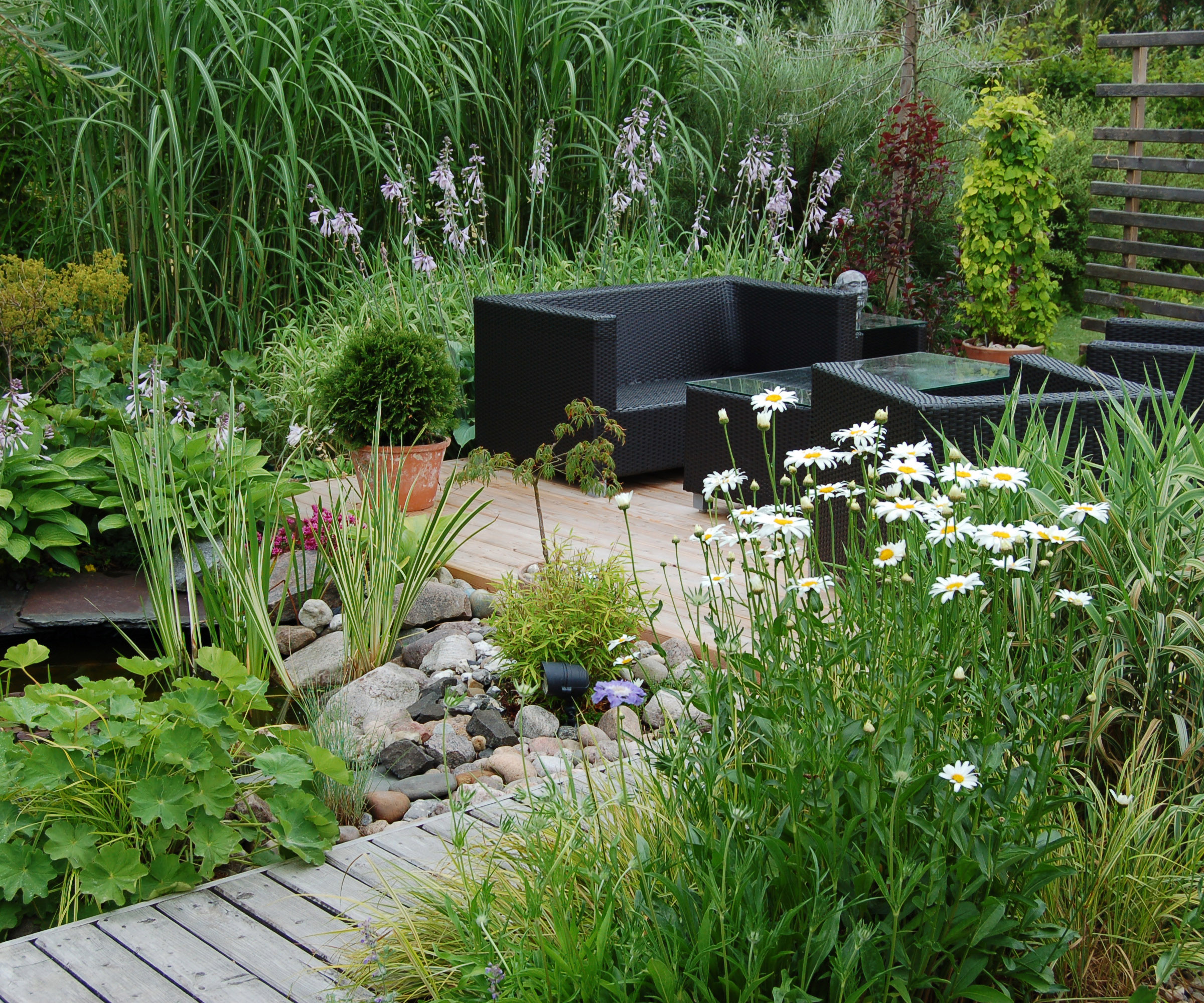
"Zoning can be used within your garden to create different areas that enhance each individual sense. This is a straightforward method for those who are beginners and unfamiliar with designing outdoor spaces," says Tom Clifford. Zones are also great for dividing up long gardens.
"For example, creating a zone that is predominately centred around scent, using an abundance of flowers and plants that give off vibrant aromas," adds Tom. "Although this area will likely also engage 'sight' senses it will not necessarily focus completely on visual elements, the sight zone will place more importance on the design of the space to create a visually interesting zone.
"Once your zoning is completed it is likely that a range of senses will flow throughout leaving a stimulating experience."

Tom has been in the garden landscaping business for more than 13 years making him an expert in garden design. He is the director of Gardenstone Limited, a garden landscaping materials company.
9. Encourage birds and wildlife to your sensory garden
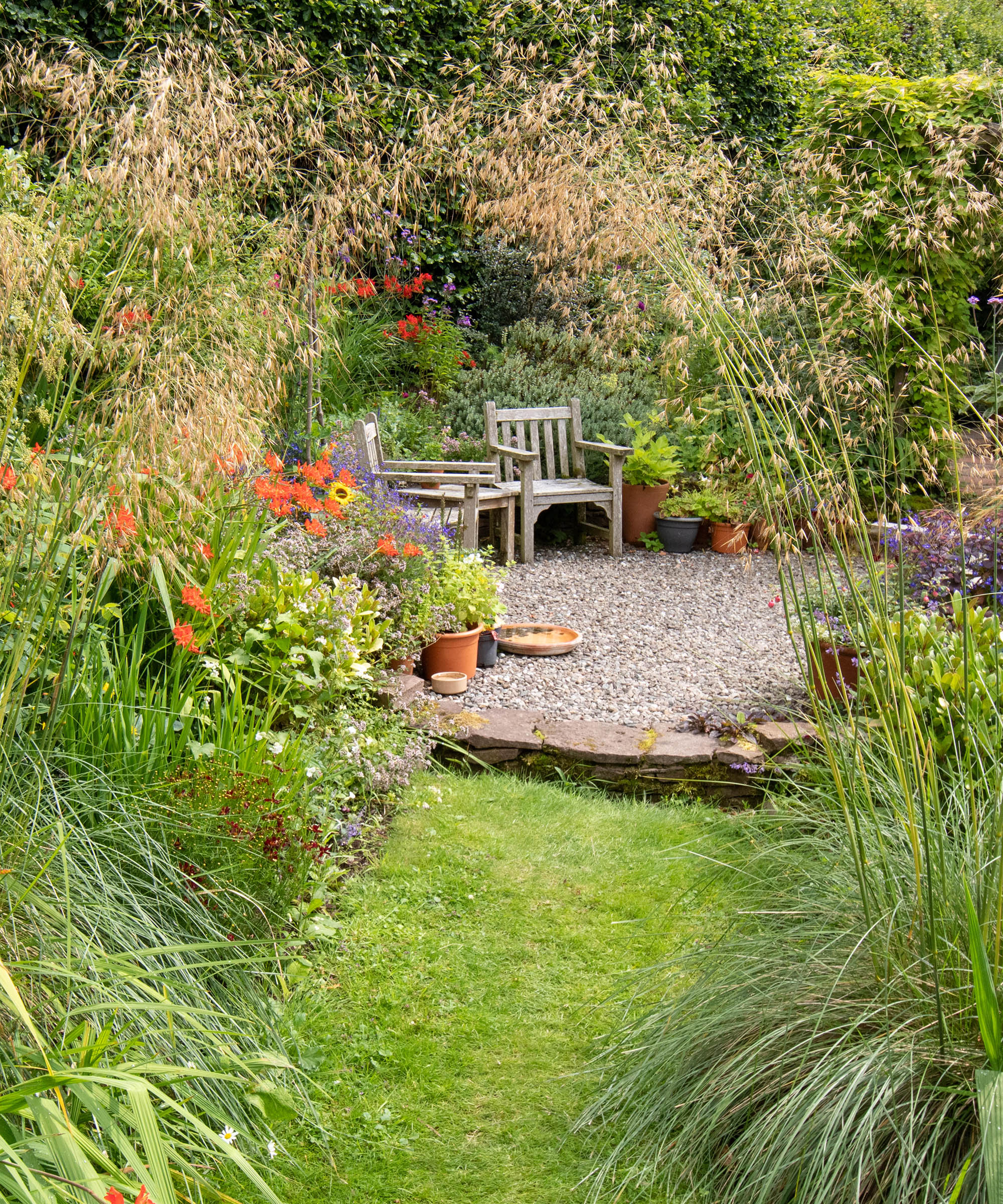
"Sensory gardens tend to attract a lot of wildlife, such as birds and butterflies, due to their array of flowers, plants and water features. Sensory gardens are a brilliant option for urban gardens to help create a country oasis in a town or city environment," says Ali Wooldridge.
"There really is nothing nicer than a dawn chorus or bird song in the early evening. Encourage birds and animals to fill your space with their sweet sounds by planting shrubs that provide safe nesting spaces," says Sarah Raven.
"Grasses like Stipa gigantea and Eucalyptus nicolsonii are perfect for this and will produce valuable forage too," she adds.

Ali founded Gardenesque five years ago from a desire to transform her London city garden into a more artistic, rich and exotic green space. The brand grew out of the belief that every garden can be brought to life by beautiful gardenware that accentuates the natural beauty of your plants, and creates an organic extension to your home
FAQs
What does a sensory garden include?
"A sensory garden is purposefully made to allow one to feel closer to nature by engaging a variety of different senses. This includes the five main senses, smell, taste, sight, touch and sound. A sensory garden can be achieved using an interesting design with a range of different plants, materials and objects that have sensory qualities," says garden design expert Tom Clifford.
These elements include:
- Scent: "Lavender is an age-old favourite that works particularly well within sensory gardens due to its delightful scent and lilac colour that is pleasing on the eye. It's common to rub lavender between your fingers in order to receive the most of its rich scent, which creates a sensory experience that includes both touch and smell," says Tom Clifford.
- Touch: "Texture plays a massive role within sensory gardens, not only are textures appealing for touch senses but they also play an important role in the visual and sound aspect of your garden. Large foliage is an easy method for adding a range of different textures and filling empty space within your garden. In addition, gravel is a texture that creates a crunching sound underfoot whilst also having a changing visual appearance in different weather conditions," says Tom.
- Sound: "Water features are a popular choice in a sensory garden as they engage sight, touch and sound. The flowing water provides a soothing sound that can create a calm and tranquil environment for homeowners to de-stress within. In addition, interesting designs can be used to create a central feature within your garden that provides visual interest," says Tom.
- Sight: A visually interesting garden with striking bright or soft and harmonious colour schemes as well as plants with different architectural qualities such as globe-shaped alliums, or spiky lupins.
- Taste: A sensory garden should ideally include some form of edible plants, this can be anything from herbs to a vegetable patch, or fruit trees.
If you're inspired by the idea of a garden which promotes a sense of zen and calm, then you could also consider incorporating some Japanese garden ideas into your space.
Typical themes include moss, natural stone and running water, all of which can help to boost the sensory appeal of your garden too.

Teresa was part of a team that launched Easy Gardens in 2018 and worked as the Editor on this magazine. She has extensive experience writing and editing content on gardens and landscaping on brands such as Homes & Gardens, Country Homes & Interiors and Living Etc magazine. She has developed close working relationships with top landscape architects and leading industry experts, and has been exposed to an array of rich content and expertise.
In 2020 Teresa bought her first home. She and her partner worked alongside architects and builders to transform the downstairs area of her two bedroom Victorian house in north London into a usable space for her family. Along the way she learned the stresses, woes and joys of home renovation, and is now looking to her next project, landscaping the back garden.
